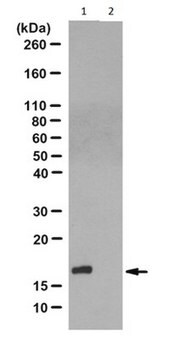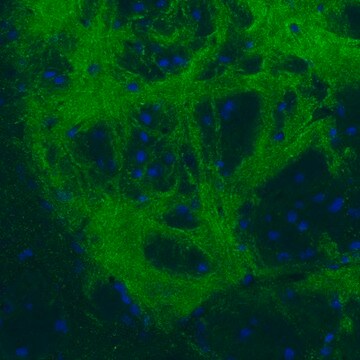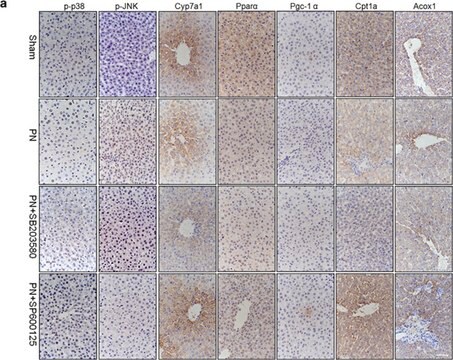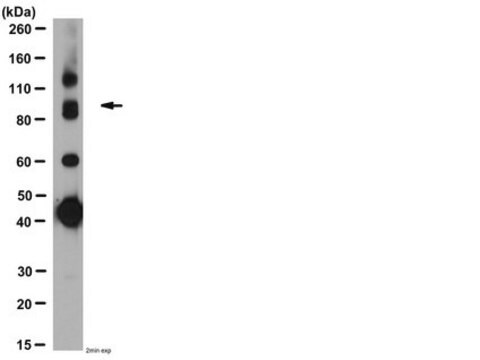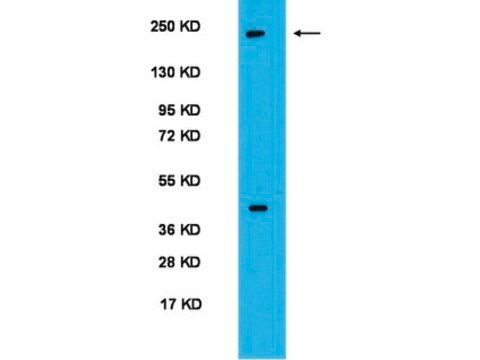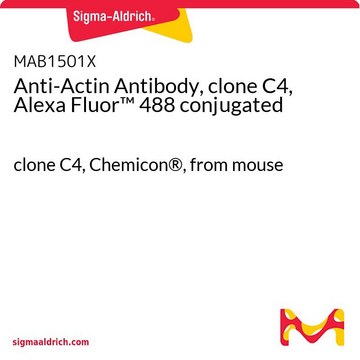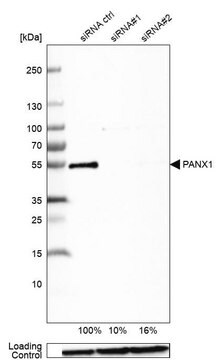MABS1341
Anti-N1-Phosphohistidine (1-pHis) Antibody, clone SC50-3
clone SC50-3, from rabbit
Sinonimo/i:
N1-Phosphohistidine
About This Item
Prodotti consigliati
Origine biologica
rabbit
Livello qualitativo
Forma dell’anticorpo
purified antibody
Tipo di anticorpo
primary antibodies
Clone
SC50-3, monoclonal
Reattività contro le specie
human, E. coli
Reattività contro le specie (prevista in base all’omologia)
all
tecniche
dot blot: suitable
western blot: suitable
Isotipo
IgG
Condizioni di spedizione
wet ice
modifica post-traduzionali bersaglio
phosphorylation (N1-pHis)
Descrizione generale
Specificità
Immunogeno
Applicazioni
Western Blotting Analysis: Clone SC50-3 hybridoma culture supernatant was employed for Western blotting analysis of heat-sensitive histidine N1-phosphorylation (1-pHis) of exogenously expressed NM23-H1/NME1 fusion proteins in lysates from transformed E. coli and HEK293 transfectants (Fuhs, S.R., et al. (2015). Cell. 162(1):198-210).
Note: DO NOT HEAT SAMPLES prior to phosphohistidine detection. Histidine phosphorylation is heat and acid labile. To generate negative control for specificity test, an aliquot of sample can be heated at 95ºC for 10-15 minutes to reverse histidine phosphorylation. Alternatively, an aliquot of sample can be incubated under acidified pH at 37ºC for 15 minutes to reduce histidine phosphorylation. Acidify each 100 µL sample with 25 µL of 1 M HCl before the incubation, then neutralize with 25 µL of 1 M NaOH prior to phosphohistidine detection.
Qualità
Western Blotting Analysis: 0.24 µg/mL of this antibody detected recombinant human NME1 (NM23-H1) with N1-phosphohistidine (1-pHis) in a 5 µg aliquot of autophosphorylation reaction.
Descrizione del bersaglio
Stato fisico
Altre note
Non trovi il prodotto giusto?
Prova il nostro Motore di ricerca dei prodotti.
Raccomandato
Codice della classe di stoccaggio
12 - Non Combustible Liquids
Classe di pericolosità dell'acqua (WGK)
WGK 1
Punto d’infiammabilità (°F)
Not applicable
Punto d’infiammabilità (°C)
Not applicable
Certificati d'analisi (COA)
Cerca il Certificati d'analisi (COA) digitando il numero di lotto/batch corrispondente. I numeri di lotto o di batch sono stampati sull'etichetta dei prodotti dopo la parola ‘Lotto’ o ‘Batch’.
Possiedi già questo prodotto?
I documenti relativi ai prodotti acquistati recentemente sono disponibili nell’Archivio dei documenti.
Il team dei nostri ricercatori vanta grande esperienza in tutte le aree della ricerca quali Life Science, scienza dei materiali, sintesi chimica, cromatografia, discipline analitiche, ecc..
Contatta l'Assistenza Tecnica.